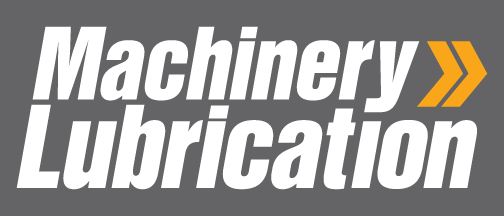 The technical team for Noria Corporation is responsible for deploying world-class lubrication programs to clients across North America and around the world. One of the tools we use to ensure the job develops in a predictable manner is the client's equipment list.
The technical team for Noria Corporation is responsible for deploying world-class lubrication programs to clients across North America and around the world. One of the tools we use to ensure the job develops in a predictable manner is the client's equipment list.
This list usually provides significant information including equipment identification number, equipment description and functional or physical location. The only problem is that these lists are only as good as the information provided. I often find maintenance departments working off equipment lists that are incomplete, inaccurate, obsolete or don't even exist!
Accounting: Helpful or Hindrance?
If we were to trace the origins of equipment lists, some keen accountant would likely be found trying to record accurate depreciated values for the company's production assets to gain an idea of the true worth of the company. Software packages today suggest this to be true. I've witnessed several companies attempting to run maintenance programs through their accounting software (software that was designed to track assets, not produce customized and informative job sheets and work orders for maintenance staff).
Those who are able to operate their maintenance department without the tight grip of accounting may choose to use a fully functional maintenance software to not only track their production assets, but to administer and track the work done on them as well. This may sound ideal, but in most cases, there are likely two functioning equipment lists and, therefore, two ways to identify the same piece of equipment.
Illegal Practices
On the opposite side of this spectrum, I've walked into production facilities that have no equipment list whatsoever. These clients truly have no idea what they have and where it is.
There are several risks involved with inaccurate, incomplete or nonexistent equipment lists. Recently, the laws have changed regarding how companies track and record information concerning their assets.
The Sarbanes-Oxley Act of 2002, named after the architects Senator Paul Sarbanes and Representative Michael Oxley (also known as the Public Company Accounting Reform and Investor Protection Act of 2002 and commonly called SOx or Sarbox) is a U.S. federal law that was developed in response to several accounting scandals at the time.
The law is designed to enforce strengthened corporate governance and restore investor confidence. Sarbanes-Oxley includes provisions that pertain to the maintenance of records that, with reasonable detail, accurately reflect the transactions and dispositions of the assets of the corporation.
Companies with large-dollar volumes of capital assets or production inventories must ensure that they effectively track those assets for accurate balance sheets and income statements. Without a fixed assets control system in place, companies may open themselves to Sarbanes-Oxley liability if their asset management process leads to significant misstatements of inventory or asset positions.
Not only can inaccurate equipment lists be considered fraudulent, but equipment lists that do not accurately reflect the products on the production floor introduce the risk of mismanagement, which could eventually lead to catastrophic failure.
Poor Equipment Lists
So how do you wind up with equipment lists that don't accurately list the actual equipment? The reasons behind poor equipment lists vary, but typically they can be narrowed down to the following:
Newly Acquired Facility. Numerous production facilities were once owned by a former company. In this scenario, the assets are identified by the previous owner's original system. The new owner requires compliance with its corporate-wide asset management system that identifies equipment with a specific naming structure.
This scenario typically begins with the old equipment list (typically not audited for completeness or accuracy). New identification is generated for each previous entry, resulting in two independent equipment lists. Neither list is complete or accurate. In an effort to maintain efficiency when identifying equipment, the plant continues to use the old system in the field because this is what the employees are used to, and the idea of learning a new system is perceived as too daunting.
New Software. Most facilities encounter a change in maintenance software at some point. This change will often require applying a new equipment identification method. Similar to the newly acquired facility, the old list is used as a base for the new system, and new or secondary identifications are generated for each previous entry. The problem here is that one system does not replace the other, and there are two systems that require periodic input and maintenance. Plant employees will often refer to one system or the other, but never both.
Accounting System vs. Maintenance System. This scenario starts and ends with a corporation employing an enterprise system to handle all aspects related to accounting. The accounting system assigns asset numbers to the equipment, however if the system does not allow for adequate maintenance management, a secondary maintenance management system must be used. Because the maintenance staff, and not the accounting staff, is in the actual plant, it is usually the maintenance management system that is putting the integrity of the accounting system at risk if not managed properly.
Multiple Lists. This last scenario has several permutations. I have found myself in situations where I've been in a newly acquired production facility that uses both an enterprise accounting system and a maintenance management system. To top it off, the plant has elected to upgrade the current maintenance system to a completely new product. When the new owners acquired the plant, they imposed their corporate-wide accounting system, which applied new identification to each asset, thus creating a second equipment list.
The new owners also brought with them maintenance management software, thereby creating a third equipment list. A few years after the acquisition, the corporation decided to upgrade to a new maintenance management software package that generated yet another equipment list. This resulted in four separate equipment lists! This scenario is a prime example of the difficulty in adopting new equipment identifiers.
There is more to equipment lists than just matching the number painted on the machine to a document and/or description. The name originally assigned to a machine can be reflected in a number of locations. Equipment identifiers are located not only on the machine itself, but on local motor starters, machine control centers, wiring to and from the MCC to the equipment, control room boards and controls as well.
Excellence Is Not Always Easy
For these reasons, many feel the task of consolidating equipment lists is too unapproachable and that it would be easier to manage more than one equipment list than to completely implement one single list.
I've heard maintenance managers say that they would prefer to start over from scratch, but it's simply not possible. The next best solution is to adopt one single system. Because a plant may have original equipment numbers in many locations, make sure to adopt a step-wise approach to the implementation of a single system. Start with one section at a time, working back from individual equipment trains. Make sure to permanently mark the equipment in an obvious way.
If a facility requires the use of an accounting system that assigns its own identification numbers to equipment, make sure the maintenance management software will allow for user-defined equipment identifiers, as opposed to system-generated IDs, or that the system can accommodate secondary user-defined identification.
With single, accurate and complete equipment lists, a company can comply with new laws governing asset management and accounting more easily, and equipment will likely be easier to maintain. With a well-defined method for maintaining an equipment list, it is less likely to forget about that small but important equipment train located in some obscure location in the plant.
References








